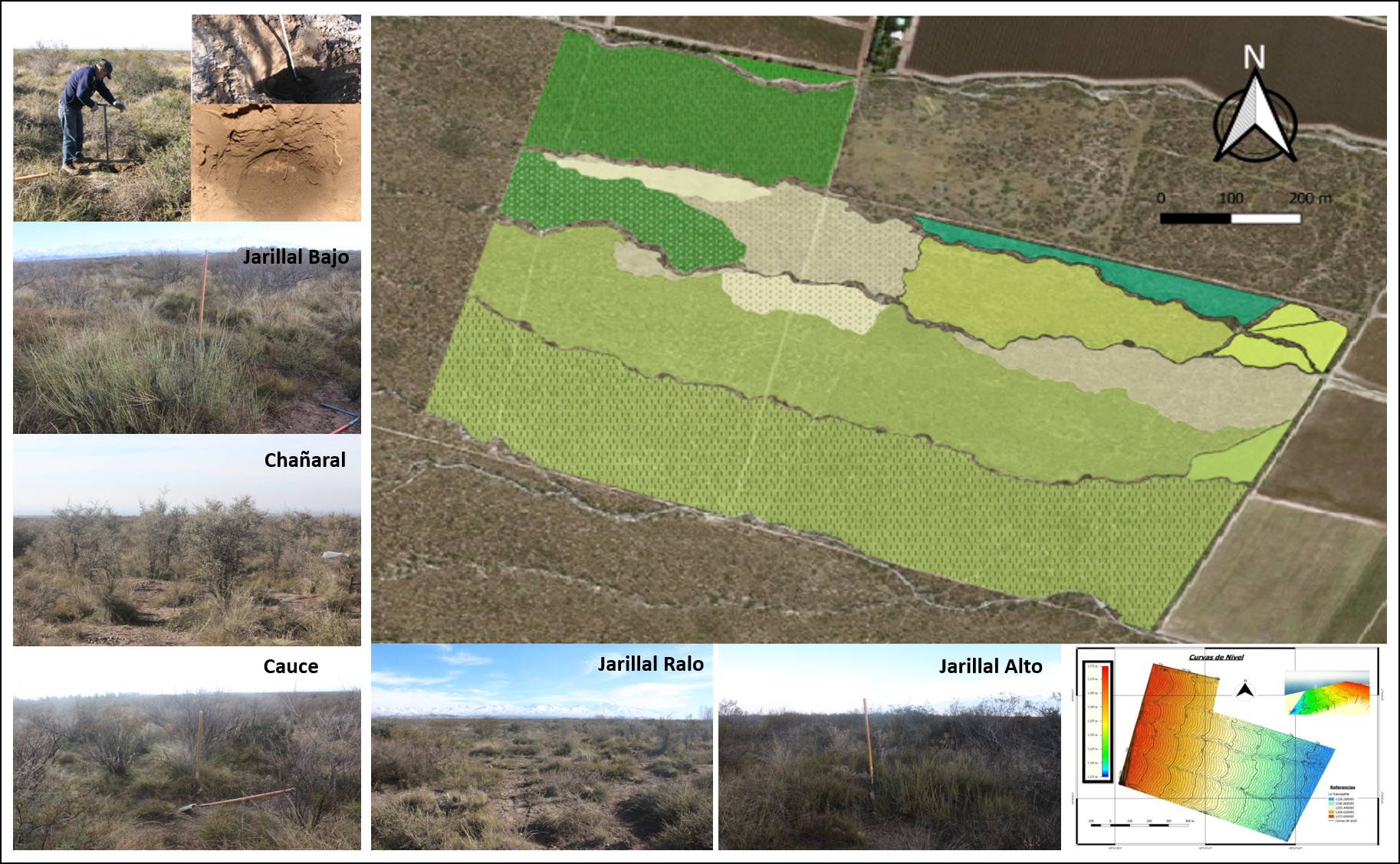Floristic and physonomic changes of vegetation and its relationship with the carbonate-calcium layer, in the vineyard area, Mendoza, Argentina
DOI:
https://doi.org/10.31055/1851.2372.v54.n2.24368Keywords:
caliche, cultivation, semiarid zone, vine.Abstract
Background and Aims: The province of Mendoza is characterized by a growing development of the cultivation of the vine. Its expansion has led to the occupation of areas with the presence of a layer of calcium carbonate. Our objective was to determine the depth of the ""caliche"" through the identification of plant communities and their zoning for use in the cultivation of the vine.
M&M: The work was carried out in an area of 60 hectares. Twenty seven phytosociological surveys and 27 Point-quadrat transects were carried out in the field to determine the vegetation cover. In each the depth of the caliche was measured through the perforation technique and the hight of the dominant plant species were evaluated
Results: There were 68 plant species recorded. The dominant matrix was represented by Larrea divaricata. Five floristic UV and physiognomic 5 UV were identified, finding a positive relationship between them. Caliche depth varied between 0-150 cm. The floristic UV showed an overlap in the depth of the caliche, but not the physiognomic UV. Geoffroea decorticans and Sennaaphylla were indicators of the presence of caliche.
Conclusions: The present work offers an alternative tool for the sampling of caliche depth, of low cost, high potential and effectiveness of use.
Downloads

Published
How to Cite
Issue
Section
License
Provides immediate and free OPEN ACCESS to its content under the principle of making research freely available to the public, which fosters a greater exchange of global knowledge, allowing authors to maintain their copyright without restrictions.
Material published in Bol. Soc. Argent. Bot. is distributed under a Creative Commons Attribution-NonCommercial-ShareAlike 4.0 International license.








